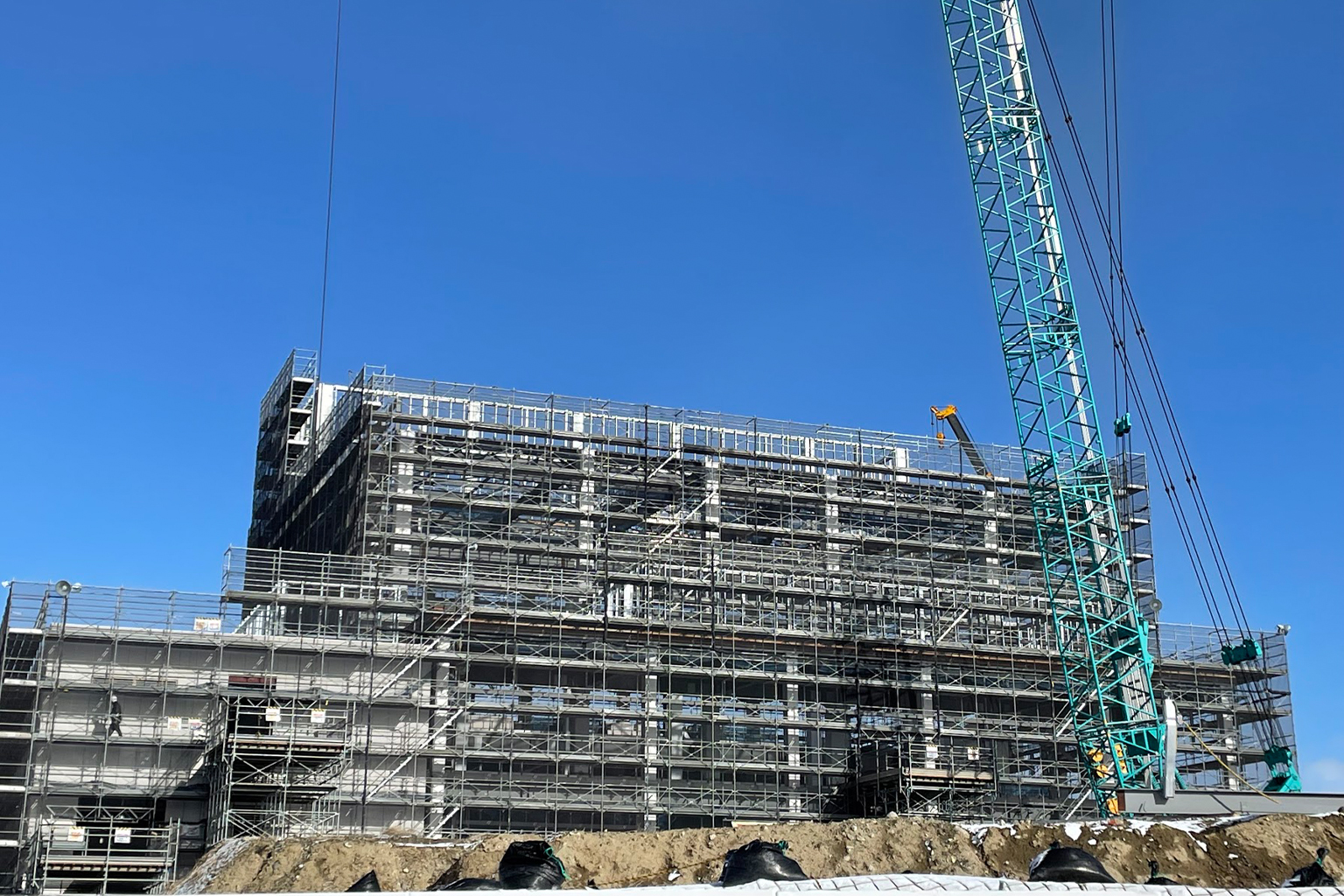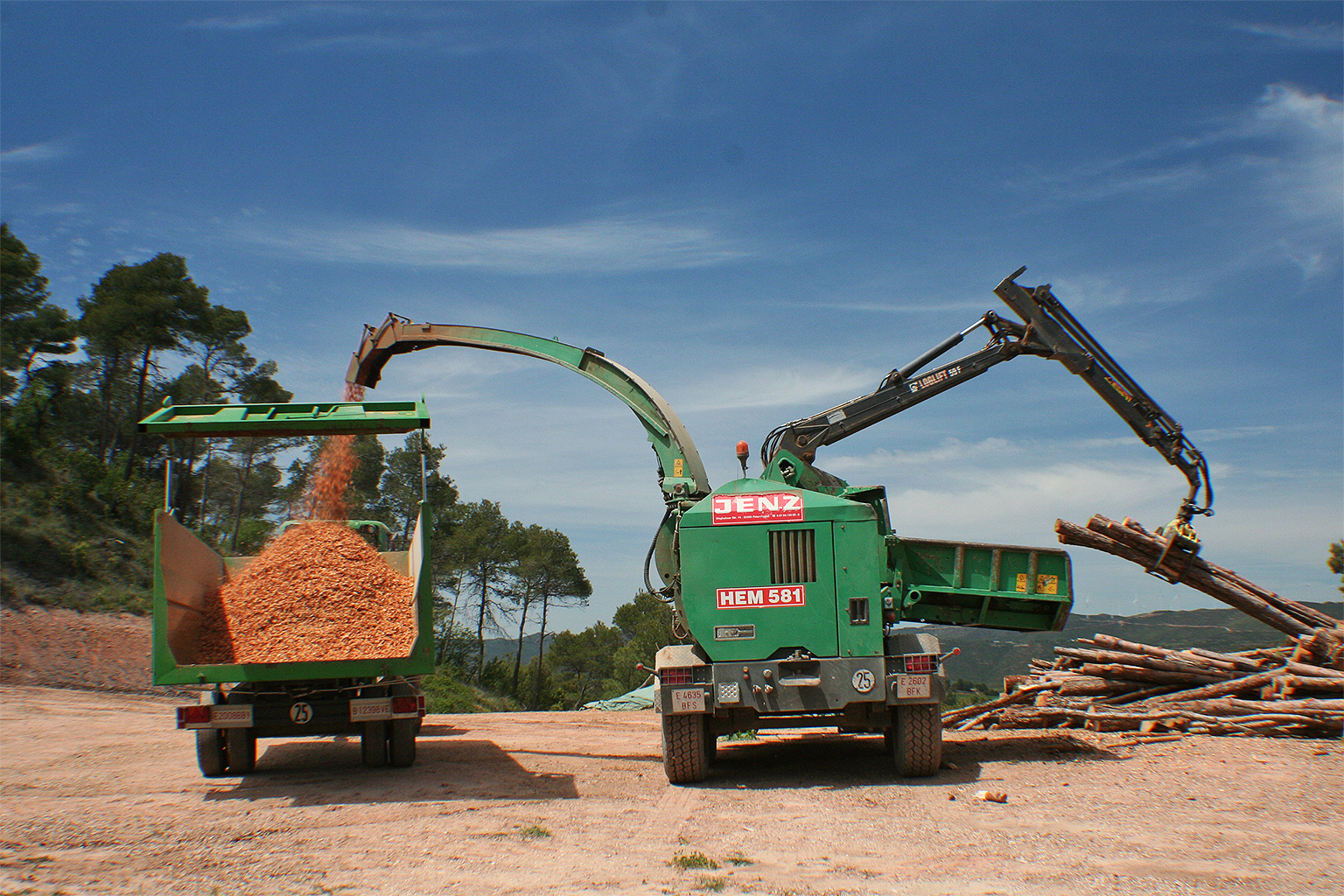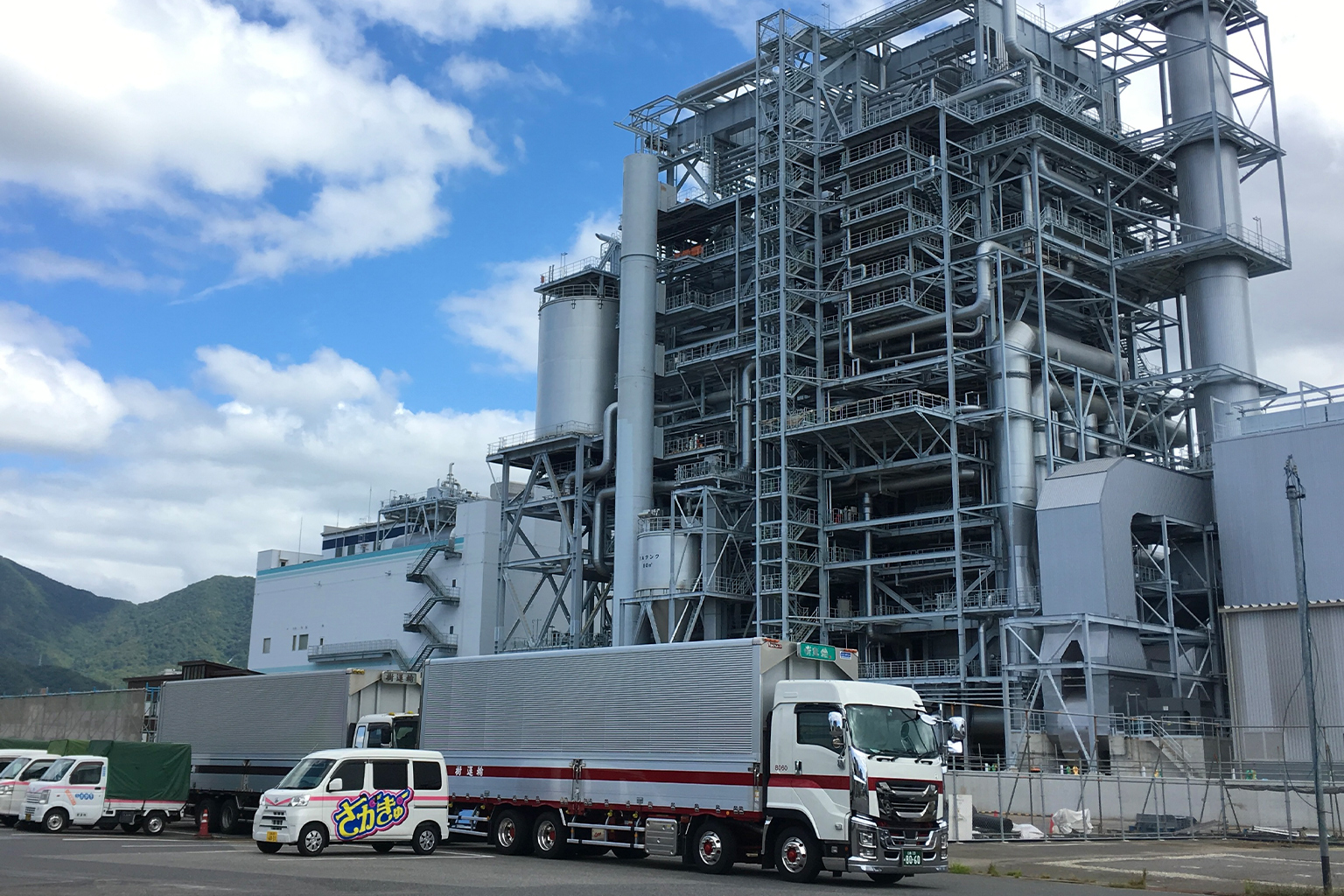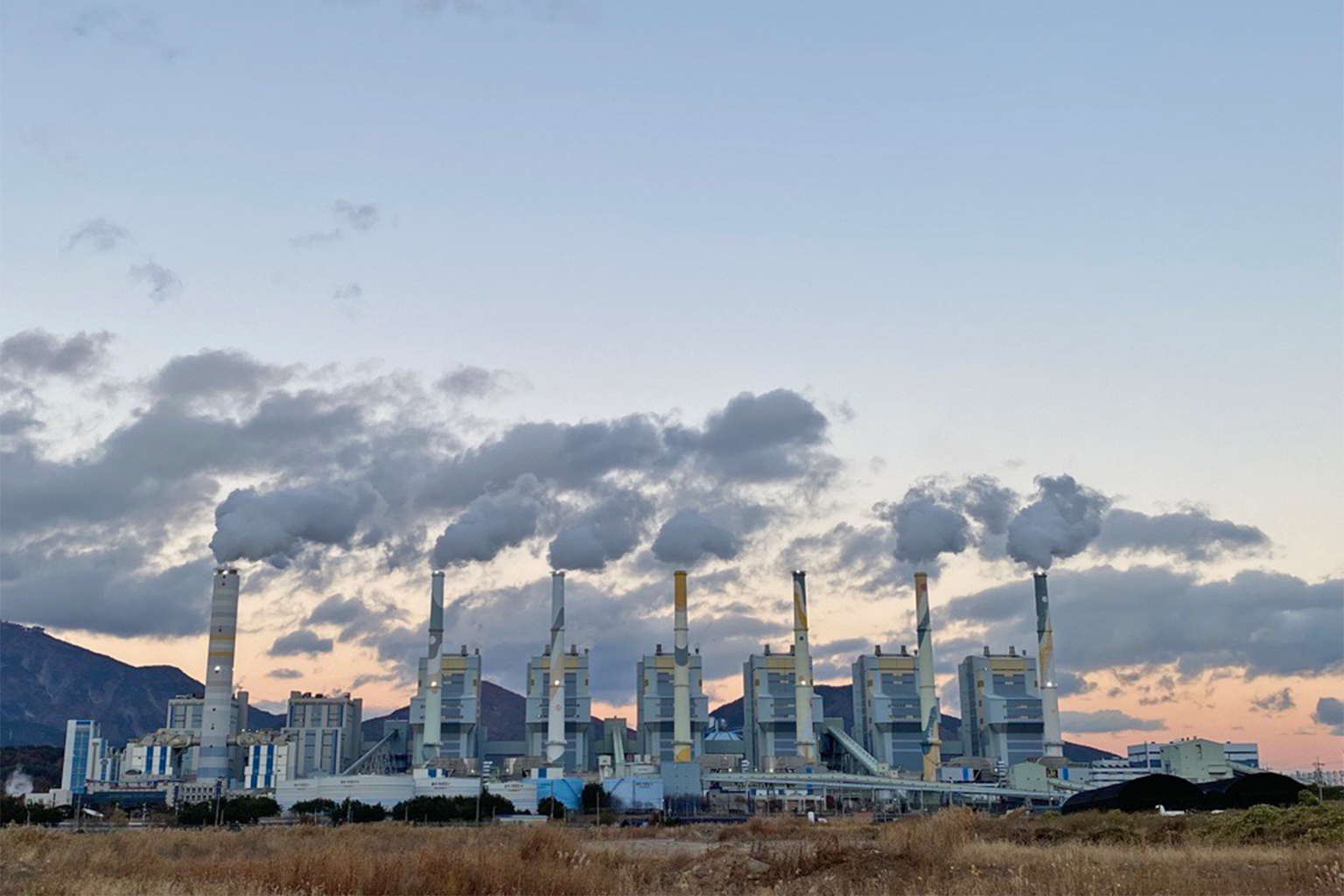- Over the past decade, Japan and South Korea have increasingly turned to burning wood pellets for energy, leaning on a U.N. loophole that dubs biomass burning as carbon neutral.
- While Japan recently instituted a new rule requiring life cycle greenhouse gas emissions accounting, this doesn’t apply to its existing 34 biomass energy plants; Japanese officials say biomass will play an expanding role in achieving Japan’s goal of reducing greenhouse gas emissions by 46% by 2030.
- South Korea included biomass burning in its renewable energy portfolio standard, leading to 17 biomass energy plants currently operating, and at least four more on the way.
- Experts say these booms in Asia — the first major expansion of biomass burning outside Europe — could lead to a large undercounting of actual carbon emissions and worsening climate change, while putting pressure on already-beleaguered forests.
This is part one of a two part series on the Asian biomass expansion. Part two can be found here.
The European Union and the United Kingdom are ramping up controversial wood burning to generate energy and heat as they follow legal mandates to phase out coal. But this practice is leaving smokestack carbon emissions uncounted and the atmosphere in arguably worse shape.
Now, on the other side of the world, two industrial Asian giants are following Europe’s lead, though with less media scrutiny to date.
Japan and South Korea, the world’s third- and 10th-largest economies, have been increasingly relying on burning wood for energy since 2012, taking advantage of a United Nations-tolerated loophole that enables them, like the EU and the U.K., to allow emissions from biomass burning to be counted as carbon neutral, putting it in the same category as renewables such as solar and wind energy.
The result may be an undercounting of their actual greenhouse gas emissions, allowing them to meet their Paris Agreement goals — at least on paper. Both Japan and South Korea pledged in 2020 to reach net zero emissions by 2050; the EU and the U.K. have the same goal.

Intensifying pressure on forests
Western and Eastern biomass usage is creating a surging demand for wood pellets, putting even more pressure on native forests in the southeastern United States, western Canada, and Eastern Europe. Experts say this demand could lead to similar logging in Southeast Asia, especially Vietnam, Malaysia and Indonesia.
The Environmental Paper Network, a global coalition of forest advocates that tracks biomass usage, estimates that demand for pellets in Japan will rise to 9 million metric tons annually by 2027, up from 0.5 million metric tons in 2017. It estimates that South Korea will hit 8.2 million metric tons annually by 2027, up from 2.4 million metric tons in 2017. The Asian combination is close to future demand predicted for both the EU and the U.K.
In South Korea, government subsidies for further biomass development have been so heavy that they are reducing investment in renewables such as wind and solar, according to a report by Seoul-based NGO Solutions For Our Climate (SFOC).
Meanwhile, “proposed Japanese demand for wood pellets would require the use of all the forests in Virginia,” Tim Searchinger, an expert on biomass for the World Resources Institute, told environmentalists in Japan during a recent presentation to forest advocates. More ominously for forests, his research indicates that “to provide 2% of global primary energy from wood requires doubling global commercial wood harvest.” Searchinger based the 2% prediction on current rising demand forecasts.
This trend comes even as nations proclaim the value in keeping forests intact. In November of last year, more than 100 nations agreed at the U.N. climate summit in Glasgow to reduce global deforestation as a primary climate-mitigation strategy. But the nonbinding pledge left plenty of room for commercial logging, which feeds wood-pellet manufacture, to continue unabated.
“[W]e cannot credibly claim to protect the world’s forests while continuing to log hundreds of millions of hectares of irreplaceable primary forests each year,” Cyril Kormos of Wild Heritage, an NGO in the U.S., said of the Glasgow agreement.

A controversial practice and policy
Burning wood for heat and cooking is a common practice in homes and communities around the world — and has been ever since humans learned to use fire. But forest advocates have been arguing for years that burning wood for energy on an industrial scale, a practice virtually nonexistent little more than a decade ago, poses a host of environmental threats while undermining climate action; these include increased deforestation, elevated carbon emissions, loss of carbon sequestration capacity, and adverse biodiversity impacts.
But industrial-scale wood burning in the form of compressed wood, or wood pellets, is on the rise. The EU is currently the world’s largest wood-pellet market, consuming nearly 31 million metric tons in 2020, up 7% over 2018’s 29 million metric tons. The EU and the U.K. operate more than 100 biomass plants producing energy and heat, according to Environmental Paper Network research.
The multibillion-dollar wood-pellet industry argues that it uses mostly waste wood to make pellets — lumber waste, limbs and tree tops, plus trees killed by pest or disease. But forest advocates have used their close monitoring of the industry to show that big international biomass companies, such as Enviva, actually use whole trees logged and clear-cut from native forests and tree plantations for at least half of wood-pellet production, and that may be a significant underestimate.
Yet because trees grow back, policymakers see them as a renewable energy source. In fact, the emergence of industrial-scale wood-pellet production can be traced back to the Kyoto Protocol of 1997. In that United Nations document, woody biomass was defined as a “renewable energy” source on par with zero-carbon wind and energy — a finding informed by the science at the time.
The belief then, long since challenged by scores of research reports, was that carbon emissions from burning trees would be quickly offset by existing forest growth and tree planting. Kyoto created what forest advocates argue is an accounting loophole by defining wood burning as carbon neutral, with countries not required to count smokestack emissions from their wood-pellet burning.


Carbon neutrality is possible, but only over a long period, says Massachusetts Institute of Technology biomass expert John Sterman. He estimates that the carbon released today by burning wood pellets will take 44 to 104 years to be reabsorbed by new tree plantings — that is, if trees are planted at all and allowed to grow that long, and are not consumed by fire, disease or insects before that time.
But that’s time the world may not have: The U.N. Intergovernmental Panel on Climate Change estimates that unprecedented carbon emission reductions must come in just eight years from the world’s largest economies to avoid an exponentially worse global climate crisis than what we’re experiencing today.
In 2009, Searchinger co-wrote a commentary in Science pointing out this carbon accounting error, believing policymakers would respond to ensure accurate carbon accounting. But with the U.K. and the EU facing legal mandates to reduce fossil fuel emissions by 2030, they both turned to industrial-scale wood burning to replace coal, clinging to Kyoto’s carbon neutrality definition for biomass, with subsidies in the EU and the U.K. reaching into the millions annually. Japan and South Korea have followed suit.
“Once you have an accounting error, you never know where it’s going to go,” Searchinger told Mongabay. “That’s been the story of biomass for energy. Once people start miscalculating emissions, you never know how bad it’s going to get. These countries are given credit for burning biomass by calling it carbon neutral. That’s the challenge.”
Making matters worse, wood pellets produce more carbon emissions per unit of energy than even carbon-intensive coal, because wood isn’t as energy dense as coal.
“Increasing biomass burning for energy in place of coal [fails] to reduce emissions at the smokestack and actually increases them,” said Peg Putt, a leader of the Environmental Paper Network in Australia. “Also, where forest biomass from natural forests is burnt, it is depleting the carbon stocks of those forests and undermines their potential to sequester carbon during the vital period for emissions reductions between now and 2050.”


The tsunami that delivered Japanese biomass
Japan’s interest in biomass energy was caused by a single event: the Fukushima nuclear disaster of 2011, according to Roger Smith, a forest advocate with the NGO Mighty Earth in Tokyo. After a 9.1-magnitude earthquake triggered a tsunami and led to a meltdown at the Fukushima plant, Japan took most of its nuclear power plants offline, which spurred rolling blackouts and an increase in fossil fuel consumption to meet its energy needs.
At the time, subsidized biomass was already gaining traction in the EU, as countries at first burned wood pellets alongside coal, in a process known as co-firing, and claiming they were gradually reducing emissions. Japan followed their lead, introducing a renewable energy subsidy in 2012 that likewise included biomass. While biomass organic material sources can range from agricultural waste to biofuels made from corn and soy, woody biomass (primarily wood pellets made from logged trees) is the greatest concern for forest and climate advocates.
“Japanese officials didn’t think through all the steps you have to do to actually build biomass power plants,” Smith said. “For example, you need a long-term fuel supply. You need emission policies in place to make sure you are mitigating climate change not making it worse. None of those elements were in place in 2012.”
In the five years after the Fukushima disaster, Japan invested in solar power, but it also pressed forward with the use of existing coal-fired plants, where coal was mixed with imported wood pellets and palm kernel shells. Over the past few years, Japan has pushed for wood pellets and palm kernel shells to replace coal or to “lower” coal plants’ emissions through co-firing.
“Once Japanese policy, or Japanese companies, do something, they want to keep doing it and improve it incrementally over time,” Smith said. “So, on energy, the utilities and heavy industry are very invested in the status quo, which used to be a large baseload of centralized plants using nuclear, coal, natural gas and oil. That’s what makes biomass so appealing to them.”
There does appear now to be a slight shift in how Japan will approach biomass burning in the future. A year ago, Smith said, Japanese policymakers seemed open to arguments that biomass might not be the climate solution they originally imagined.
And last month, they implemented a “life cycle greenhouse gas assessment standard” that limits future biomass expansion. It does not, however, apply to existing biomass power plants, of which there are currently at least 34 throughout the country at 50 megawatts or larger, according to monitoring by the Environmental Paper Network.

Japanese government views
A Mongabay interview in April with Japanese officials confirmed the country’s commitment to wood pellets, with minor caveats just now being implemented.
“Unlike solar and wind, biomass is a renewable [energy source] that isn’t reliant on the weather and can produce a stable supply of electricity,” said Japanese officials in charge of biomass at the Agency for Natural Resources and Energy’s New and Renewable Energy Division, who spoke on condition of anonymity.
The officials said biomass will play an expanding role in achieving Japan’s goal of reducing greenhouse gas emissions by 46% by 2030. Because Japanese policy requires biomass energy sources to be sustainable, the nation hopes to produce more biomass in-country, farming fast-growing cedar and cypress that can be harvested in 10-year cycles to make pellets, according to the anonymous officials.
The officials added that trees should be replanted wherever they’re harvested for biomass, but researchers say this will have little climate impact in the near term, since it would take decades for the lost carbon to be stored in growing trees.
In April 2022, the Japanese government, following recommendations made by its biomass working group, introduced a requirement that newly certified biomass projects receiving subsidies must reduce life cycle greenhouse gas emissions by 70% compared with fossil fuels from 2030 onward.
Japan’s existing 34 plants, however, are exempt. So, this new regulation would clearly not reduce the nation’s current biomass usage, Smith said, noting that “There have been almost no [newly certified biomass projects] in recent years.” The fight for NGOs now, he said, is to get the new rule applied to existing biomass plants, given that Japan has only three new plants in planning.
Not everyone agrees with prevailing Japanese views. Seiji Hashimoto, a professor at Ritsumeikan University in Kyoto and a member of the Ministry of Economy, Trade and Industry (METI) biomass working group, said he’s deeply skeptical of the claim that biomass is carbon neutral and agreed with the bulk of research showing that “paying back” the carbon debt from burning biomass takes decades.
“Biomass is not carbon neutral simply because it is biomass,” Hashimoto told Mongabay. “We need to think about how to use biomass in a carbon-neutral way in order to lower emissions. In doing so, it is important to not reduce the amount of carbon stock stored in biomass [forests], but to enhance it if possible.”
However, Smith of Mighty Earth views Hashimoto’s hope as unrealistic that Japan can satisfy its demand for wood pellets while simultaneously improving the carbon storage capacity of forests.

South Korea’s biomass trajectory
It didn’t take a tsunami to introduce biomass to South Korea in 2012. The industrial giant merely reviewed EU and U.K. policies and made biomass a part of its renewable energy portfolio standard. As in Europe, lucrative subsidies for woody biomass were put in place, called renewable energy certificates (RECs).
South Korean companies are required to get 6% of their energy from renewables, according to Soojin Kim, a former senior researcher at the NGO Solutions For Our Climate in South Korea. RECs can be traded on the market, thus companies can either meet their quota or trade for certificates.
“Because biomass was included in the Renewable Energy Portfolio Standard, it has been given a lot of attention,” Kim said. REC inclusion made it “easier for power producers, especially coal-power producers, to burn biomass in their own existing facilities without having to invest in another renewable source.”
Currently, South Korea has 17 biomass power plants, some still co-fired with coal, with three under construction and one more planned, according to the Environmental Paper Network. A report by Solutions For Our Climate found that electricity generation from biomass in South Korea increased by a factor of 61 in megawatt hours between 2012 (106,000 MWh) and 2018 (6.49 million MWh). The latter year, the country imported 3.4 million metric tons of wood pellets, with only the U.K. and Denmark importing more.
“Biomass is jeopardizing [South] Korea’s renewable energy sector and negating global efforts to reduce greenhouse gas emissions,” states the report co-authored by Kim.

South Korean government officials declined to comment. Kim said that government scientists tell her that newly planted trees absorb more carbon than older trees, so harvesting older trees is a helpful climate-mitigation strategy.
That claim is the exact opposite of what forest ecologists have concluded for years: The older and larger the tree, the greater its carbon sequestration and storage capacity. Every time an old tree is burned for energy, all of the carbon it has stored for decades — sometimes centuries — is released into the atmosphere.
A week prior to the 2021 U.N. climate summit in Glasgow, 12 NGOs in Japan and South Korea co-wrote a letter to the Japanese prime minister and South Korean president. They decried the growing use of biomass and rising subsidies. They summarized the science that challenges the widespread, though scientifically dubious, idea that burning wood is carbon neutral. And they blamed national biomass policies for worsening the global climate crisis.
They urged both leaders to announce reforms protecting global forests, requiring that renewable energy reduce near-term emissions, and creating more transparent regulations to make existing biomass burning more sustainable.
During the two-week U.N. summit in early November, the issue of biomass policy was never a part of the official agenda. It wasn’t discussed or debated during negotiations. And the leaders of Japan and South Korea ignored the NGOs’ requests.
Banner image: Timber for biomass burning at Tofte, Norway. Image by Statkraft via Flickr (CC BY-NC-ND 2.0).
Justin Catanoso, a regular contributor, is a professor of journalism at Wake Forest University in the United States. Follow him on Twitter @jcatanoso. Annelise Giseburt contributed reporting from Japan.
Citations:
Sterman, J. D., Siegel, L., & Rooney-Varga, J. N. (2018). Does replacing coal with wood lower CO2 emissions? Dynamic lifecycle analysis of wood bioenergy. Environmental Research Letters, 13(1), 015007. doi:10.1088/1748-9326/aaa512
Searchinger, T. D., Hamburg, S. P., Melillo, J., Chameides, W., Havlik, P., Kammen, D. M., … David Tilman, G. (2009). Fixing a critical climate accounting error. Science, 326(5952), 527-528. doi:10.1126/science.1178797
Schlesinger, W. H. (2018). Are wood pellets a green fuel? Science, 359(6382), 1328-1329. doi:10.1126/science.aat2305
Mildrexler, D. J., Berner, L. T., Law, B. E., Birdsey, R. A., & Moomaw, W. R. (2020). Large trees dominate carbon storage in forests east of the Cascade Crest in the United States Pacific Northwest. Frontiers in Forests and Global Change, 3. doi:10.3389/ffgc.2020.594274
FEEDBACK: Use this form to send a message to the author of this post. If you want to post a public comment, you can do that at the bottom of the page.
